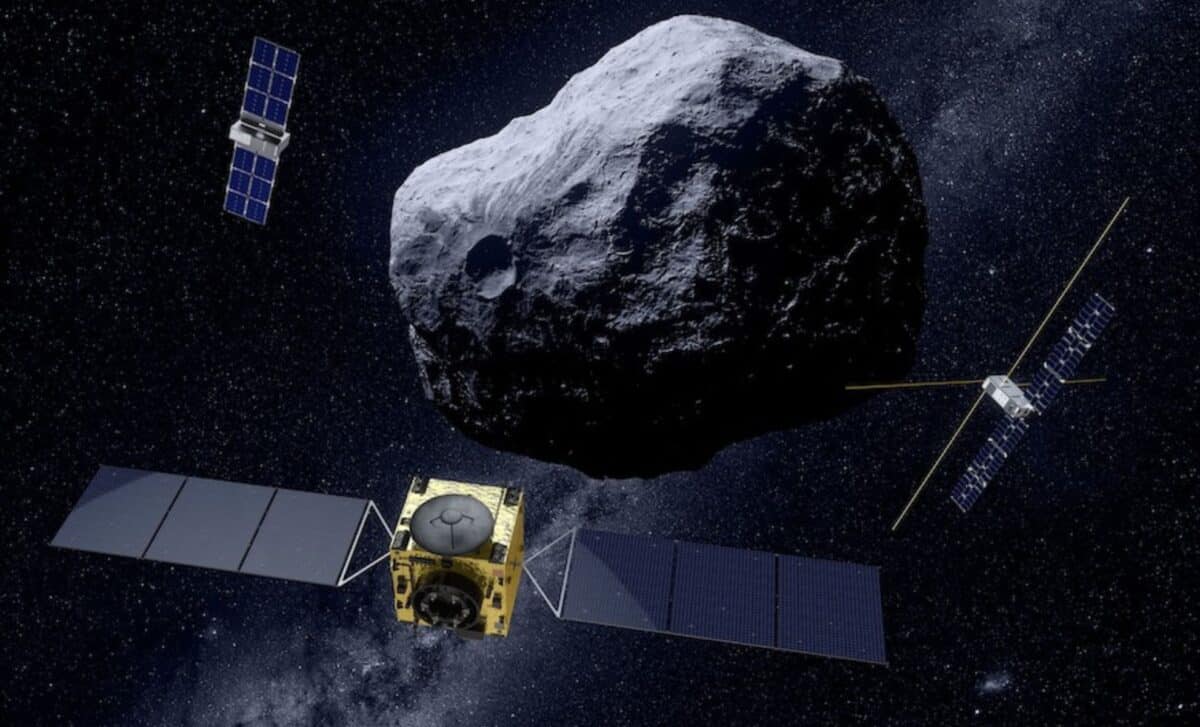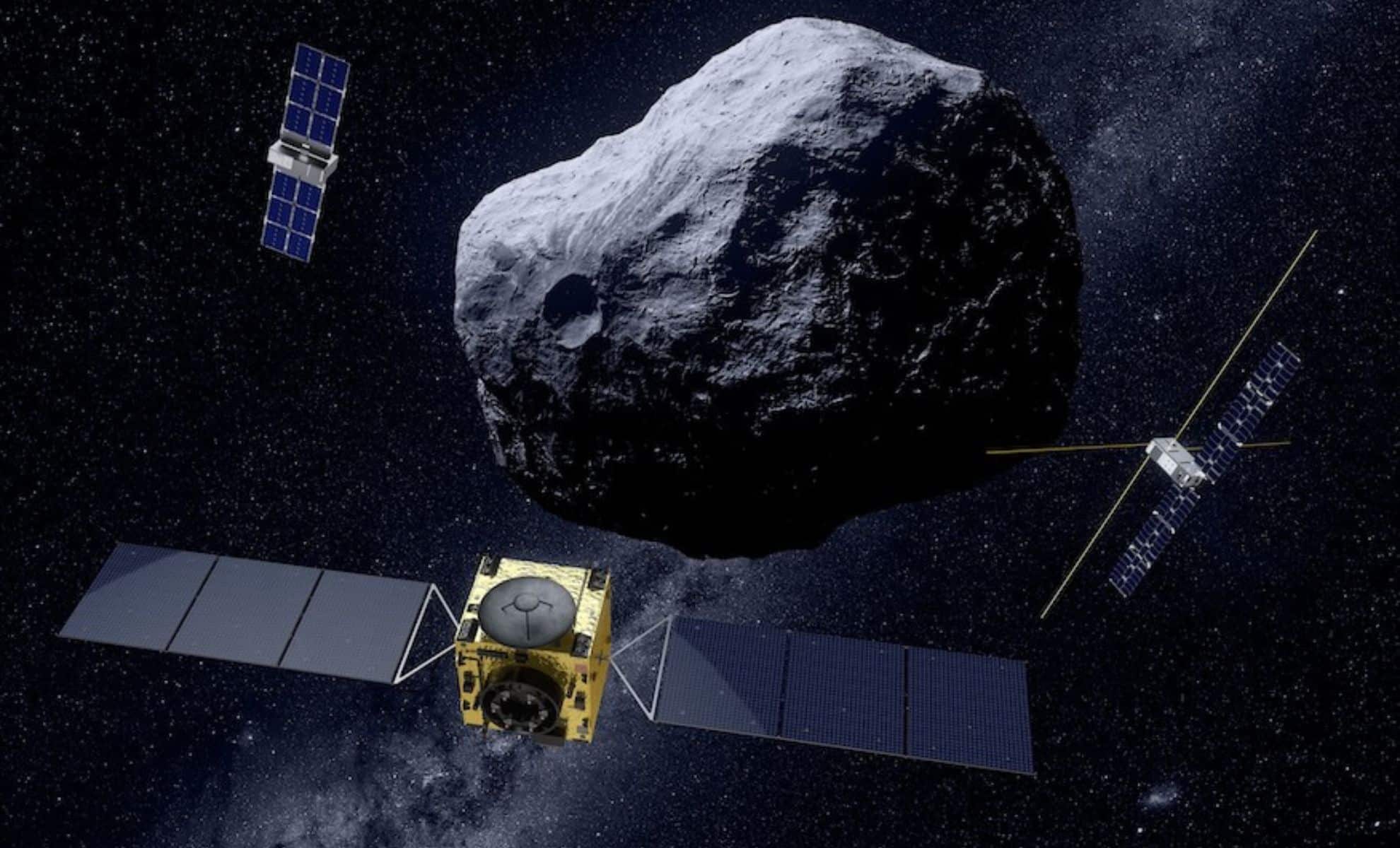The European Space Agency’s Hera mission is set to launch aboard a SpaceX Falcon 9 rocket from Cape Canaveral, aiming to study the aftermath of NASA’s DART impact on the asteroid Dimorphos. The mission will assess the crater created by DART, analyze the asteroid’s internal structure, and provide key data for future planetary defense efforts.
SpaceX to Launch ESA’s Hera Mission Today: A Crucial Step in Earth’s Planetary Defense Strategy

The European Space Agency's (ESA) Hera mission is set to launch today aboard a SpaceX Falcon 9 rocket from Cape Canaveral.
The mission will revisit the Didymos asteroid system to study the aftermath of NASA's DART mission, which altered the trajectory of the asteroid Dimorphos in 2022. Hera will provide detailed insights into asteroid deflection, a crucial element in planetary defense strategies.
Mission Overview: A Critical Step in Planetary Defense
The Hera mission aims to conduct an extensive investigation of Dimorphos, focusing on the effects of NASA’s DART impact. The mission will measure the size and depth of the crater created by DART and analyze the asteroid's internal structure and surface composition. This data will help scientists refine asteroid deflection techniques for future planetary defense missions.
Michael Kueppers, Hera's project scientist, emphasized how critical the data from Hera will be for future scenarios: "Once we have Hera and we investigate Dimorphos in detail, we know what its properties are, and in case anything happens, we can extrapolate the results from DART and Hera." Understanding the full impact of DART will enable scientists to better assess how future deflection efforts could be applied to potentially hazardous asteroids.
How to Watch the Launch
The Hera mission is launching aboard SpaceX's Falcon 9 rocket, with liftoff scheduled for 10:52 a.m. EDT (1452 GMT) today. The launch will be streamed live, and space enthusiasts can follow the event on ESA’s official YouTube channel. The livestream will cover the buildup to liftoff, allowing viewers to watch the mission unfold in real time.
However, weather could pose a challenge for the launch. Hurricane Milton is approaching Florida, and the 45th Weather Squadron has forecast only a 15 percent chance of favorable conditions during the scheduled launch window. Despite the weather uncertainty, teams remain hopeful for a successful launch. If conditions do not improve, the launch window remains open through October 27.
The Falcon 9 booster, designated B1061, will make its 23rd and final flight for this mission. This particular booster has been used for notable missions such as Crew-1 and Crew-2, but due to the interplanetary nature of Hera, it will be expended after this launch.
Hera’s Extended Mission and Cubesat Companions
Once launched, Hera will take a two-year journey to reach Dimorphos. Unlike DART, which impacted the asteroid, Hera will perform a slow, methodical survey, providing detailed data on both the crater left by DART and the overall structure of the asteroid. The mission will also deploy two small cubesats, Milani and Juventas, to assist in gathering scientific data.
Milani will focus on analyzing the asteroid’s surface, while Juventas will measure its internal structure and gravity. Margherita Cardi, Milani’s program manager, explained that while landing on the asteroid is not required for mission success, they aim to attempt it as part of a technological demonstration. Juventas will use a radar system to probe the subsurface of Dimorphos, providing the first direct look inside an asteroid of this kind.
This mission represents a significant leap in planetary defense research. Jan Persson, Juventas’ project lead, explained that their gravimeter will measure the asteroid’s gravity, which is "the size of the pyramid in Egypt," offering unprecedented insight into its properties. Together, Hera and its cubesats will provide a detailed picture of how asteroid deflection can be refined for future missions.
Impact on Future Planetary Defense Missions
Hera’s arrival at Dimorphos in 2026 will allow for a gradual, detailed study of the asteroid. Unlike DART’s high-speed impact, Hera will slowly approach, providing a longer observation window. This slower pace is comparable to ESA’s Rosetta mission, where the spacecraft’s approach to Comet 67P allowed for a sustained and thorough analysis.
Cheryl Reed, a key figure in NASA’s DART mission, emphasized the importance of Hera and DART working in tandem: "These two missions collectively... put planetary defense on the map." Reed added that DART’s impact resonated with the public, raising awareness of asteroid threats, and the follow-up with Hera will deepen our understanding of how such impacts can be managed.
The Hera mission will pave the way for more effective asteroid deflection strategies, marking a significant advancement in our ability to protect Earth from future asteroid threats.



